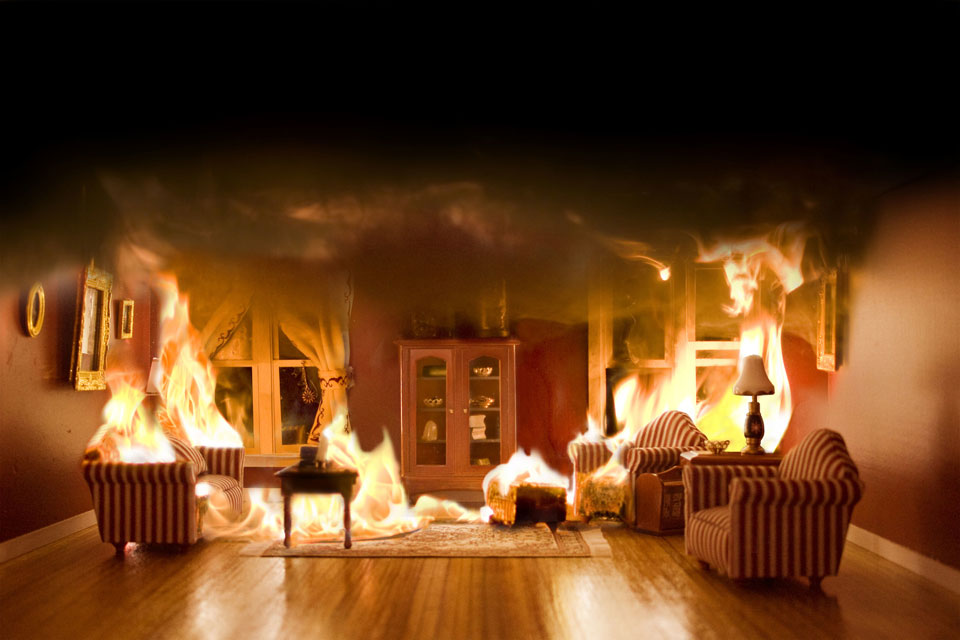
Strange worlds by Matthew Albanese

31 years oldMatthew Albanese,
Photographer, works and lives in Midland Park, NJ. Works with diorama, miniature art, special effects and fashion photography. Gets inspired by works of James Casebere and Gregory Crewdson.
The idea of the “Strange Worlds” emerged almost by accident – when I started photography in 2008, my first “studio” was next to a kitchen and I spilled some paprika. While cleaning up I tried to make a landscape with it’s help – I liked the color and the texture. Then I bought 25 pounds of it and created my first ever scene.
There is no specific inspiration – it’s a mess of everything and it’s different for every scene. Each photo starts with a basic concept, or maybe the memory that I have, or a place I remember visiting as a child, or a place I wish I could go to. Then I start looking at the hundreds of photographs and do a research – it gives me a lot of control, because I can pick and choose what details I like the most from all these different sources and then I can build it into my piece. It gives me a tremendous amount of control. Anything can make a good photography. The more personal the work is, the more I’m able to connect with it. Technical skills are important when it comes to execution, but first of all I look for personal messages.
It’s important for the photographer to forget modesty and walk through every door that is open for you. Don’t be afraid, don’t be too shy. Don’t think that you are not good enough for the opportunity – no one knows where it might lead to.
{
“img”: “/wp-content/uploads/2014/06/matthew-albanese-1.jpg”,
“alt”: “Matthew Albanese 1”
},
{
“img”: “/wp-content/uploads/2014/06/matthew-albanese-2.jpg”,
“alt”: “Matthew Albanese 2”
},
{
“img”: “/wp-content/uploads/2014/06/matthew-albanese-3.jpg”,
“alt”: “Matthew Albanese 3”
},
{
“img”: “/wp-content/uploads/2014/06/matthew-albanese-4.jpg”,
“alt”: “Matthew Albanese 4”
},
{
“img”: “/wp-content/uploads/2014/06/matthew-albanese-5.jpg”,
“alt”: “Matthew Albanese 5”
},
{
“img”: “/wp-content/uploads/2014/06/matthew-albanese-6.jpg”,
“alt”: “Matthew Albanese 6”
}
It takes from one to seven months to create one scene – I don’t do it during the day, I do it at night and on the weekends. The most difficult task is to take proper materials and to apply lighting to them. The process of lighting is very tricky – it takes a long time and I use many sorts of lights. Sometimes I use up to 11 different sources of light to create one scene. This is what actually makes them so realistic. The work is seen on camera – when you look at the scene in the real life it might not be very clear. Once I take a photograph the penny drops.
Some props are discovered by accident, other times it’s just a lot of brainstorming and thinking and then shopping around a little bit, running some tests – so that I know that materials will work when I need them to. And then I create the scene and do the whole piece. It can be anything – sand, paper, glass, spices, cotton, kindling wood etc. – there are no limits.
I try to save only elements and materials that I can use later on. I only care about the finished photographs – that’s the goal, that’s the work for me. My scenes do stand the test of time – materials sag, wilt and droop. I can’t and I don’t want to keep them – I enjoy dismantling them when the photo is finished.
My first photos were quite inexpensive in production because of the materials – usually I already had the materials I wanted to use. That time it was around $100, now it sometimes pulls up to $700 – it depends on the materials I want to buy. The one with the dollhouse was very expensive – I purchased all of that dollhouse furniture. I wanted it to be authentic to the world and a hobby of dollhousing. It was the same with the train set – I purchased all of the train cars and it was very expensive – I put around $3000 into each of them.
{
“img”: “/wp-content/uploads/2014/06/matthew-albanese-7.jpg”,
“alt”: “Matthew Albanese 7”
},
{
“img”: “/wp-content/uploads/2014/06/matthew-albanese-8.jpg”,
“alt”: “Matthew Albanese 8”
},
{
“img”: “/wp-content/uploads/2014/06/matthew-albanese-9.jpg”,
“alt”: “Matthew Albanese 9”
},
{
“img”: “/wp-content/uploads/2014/06/matthew-albanese-10.jpg”,
“alt”: “Matthew Albanese 10”
},
{
“img”: “/wp-content/uploads/2014/06/matthew-albanese-11.jpg”,
“alt”: “Matthew Albanese 11”
},
{
“img”: “/wp-content/uploads/2014/06/matthew-albanese-12.jpg”,
“alt”: “Matthew Albanese 12”
}
My book is published because of the fact that my works were shown in the Museum of Art and Design, and a curator of the museum was working very closely with the book editor. She saw my works while being in the process of starting a new publishing company and asked me if I would like to have the book published. A lot of factors play into the success of the book, but it can be profitable. It certainly was profitable for me.
I work with miniature art a lot – I think, that’s how I’ve found my voice as the photographer. Now I’m experimenting with the ways of bringing 3D-printing into my works – I want to scan actual people and literally put them into my “Worlds”. It’s a huge step forward for the project and a risk for me as a photographer, but I think, it’s important to challenge yourself in what you do.
New and best




